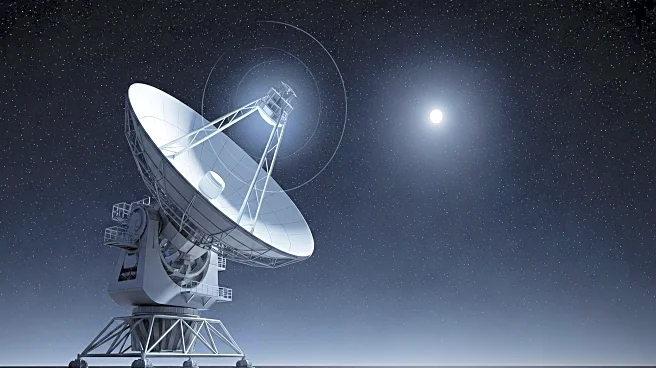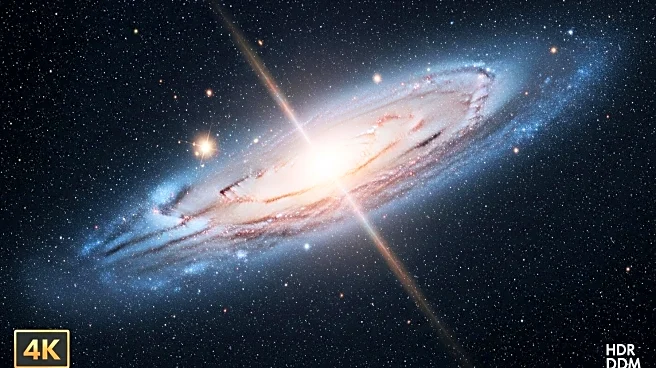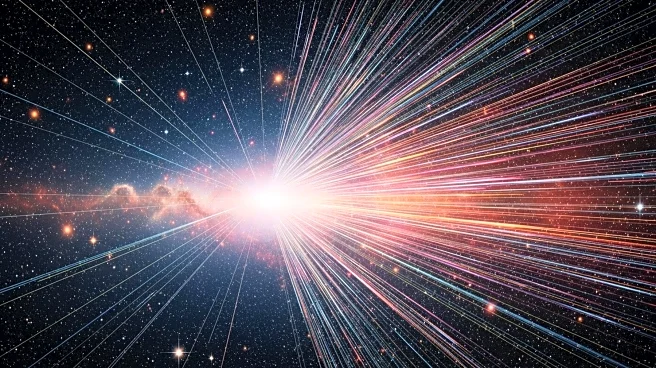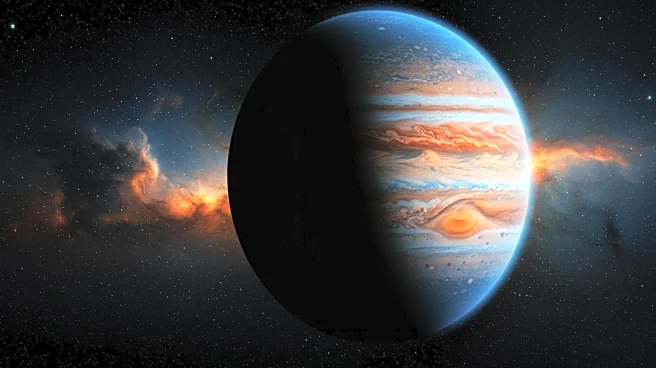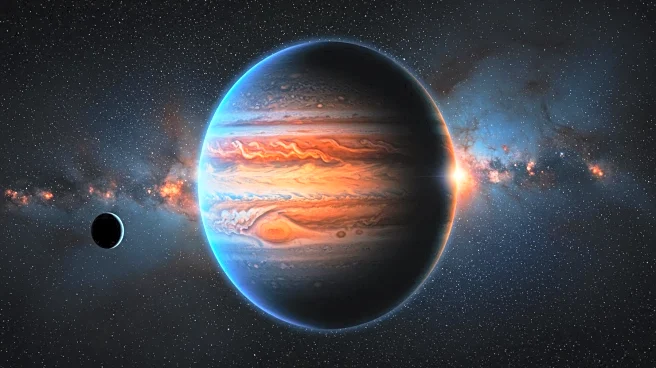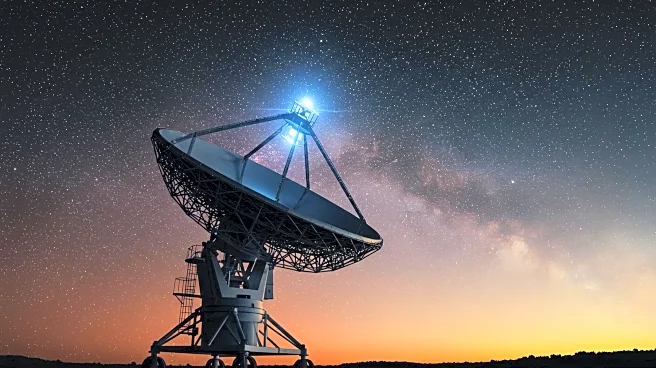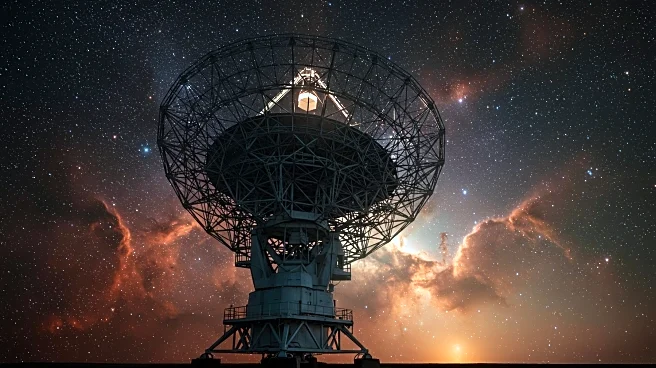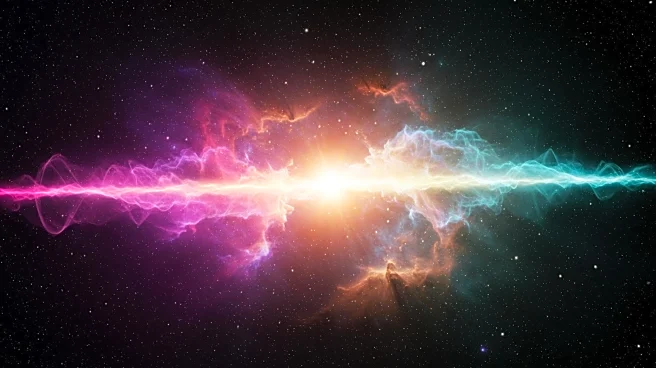What's Happening?
The 'Wow! Signal,' a mysterious radio signal detected in 1977 by Ohio State University's Big Ear radio telescope, is being re-examined by researchers from the Planetary Habitability Laboratory at the University of Puerto Rico at Arecibo. The signal, initially considered potential evidence of extraterrestrial intelligence, is now thought to have a natural astrophysical origin. The research team, led by Abel Méndez, has analyzed archival data and unpublished observations to provide a more precise characterization of the signal. Their findings suggest the signal may have been caused by a sudden brightening of the hydrogen line in interstellar clouds, possibly triggered by a magnetar flare or soft gamma repeater. The study aims to refine the understanding of the signal's properties and origin, reopening the investigation with new insights.
Why It's Important?
The re-evaluation of the 'Wow! Signal' holds significant implications for the field of radio astronomy and the search for extraterrestrial intelligence. By suggesting a natural astrophysical origin, the study challenges previous assumptions about the signal's extraterrestrial nature, potentially redirecting future research efforts. This development could influence how scientists approach unexplained cosmic signals, emphasizing the importance of considering natural phenomena. The findings also highlight the role of modern science methodologies in revisiting historical data, offering a clearer picture of cosmic events and aiding in the effective targeting of future observations. The research underscores the need for continuous monitoring and analysis of transient cosmic events, which could lead to new discoveries in astrophysics.
What's Next?
The ongoing research into the 'Wow! Signal' has led to the creation of the Wow@Home project, a citizen science initiative that allows individuals to participate in the search for similar signals and rare cosmic events. This project utilizes low-cost radio telescopes, enabling continuous monitoring and expanding participation in radio astronomy. The Wow@Home network aims to detect transient events that professional observatories may not observe full-time. The research team plans to archive and share all data from the Big Ear telescope by 2027, marking the 50th anniversary of the signal's detection. Future studies will focus on refining the understanding of the signal's properties and exploring its potential natural origins further.
Beyond the Headlines
The investigation into the 'Wow! Signal' raises broader questions about the nature of cosmic signals and the methodologies used in their analysis. The study exemplifies the intersection of historical data and modern scientific techniques, akin to 'space archaeology.' It also highlights the potential for citizen science to contribute to significant scientific endeavors, democratizing access to research and fostering public engagement. The initiative reflects a shift towards collaborative and inclusive scientific practices, encouraging broader participation in the exploration of cosmic phenomena. This approach may inspire similar projects in other areas of science, promoting innovation and discovery through community involvement.
